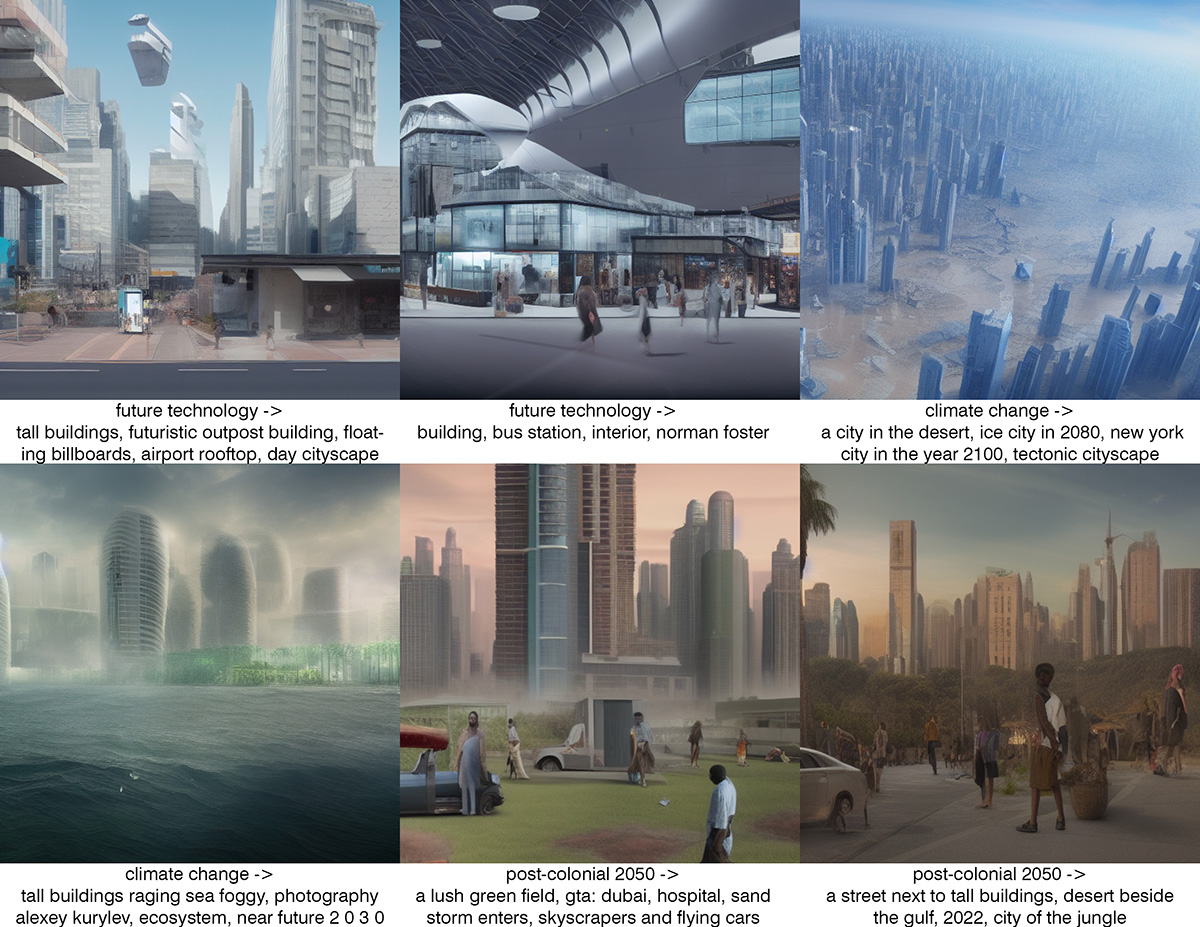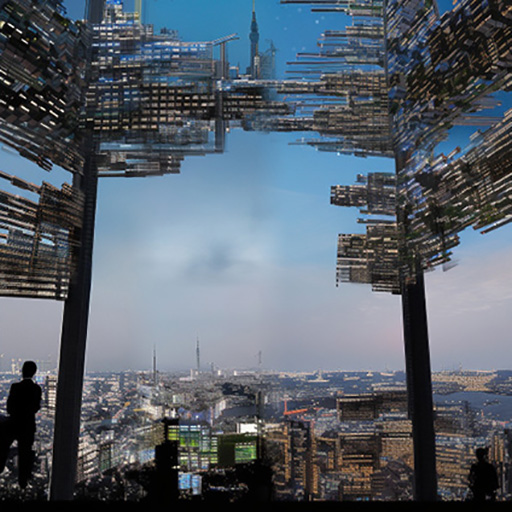
STRATIFORM CITY?
in-progress
The data-driven 'creativity' of AI image generation empowers creative workers to instantly visualize their ideas within the collective knowledge of the model's training datasets. On the other hand, its wide applications impose cultural uncertainties on future developments of media-recycled cliches, biases, and misconceptions. Architectural Imagination is particularly vulnerable to the AI augmentation of media-recycled futures, not only for the homogenity of its source materials under the stagnated forms of global urbanization but also for the cultural complexity of its visual representation beyond aesthetic controls of AI generative workflows. As with the image search results of trendy design platforms, the 'future city' images generated by Stable Diffusion and Midjourney show overwhelming impacts of Dubai skylines, cyberpunk night views, and various popular culture references that reduce both utopian and dystopian impulses into aesthetic layerings of the same architectural forms. On the other hand, the AI simulation of media-recycled futures provides an exciting opportunity to test the performance of radical design alternatives in media-saturated environments. By embedding counter-narratives of popular architectural imagination from design history, can AI dream of the lost futures?
 The media-recycled urban futures represented by Stable Diffusion.
The media-recycled urban futures represented by Stable Diffusion.
Taking Stable Diffusion v1.5 (Stability AI) as a base model, this open-ended project generates counter-narratives of media-recycled urban futures through 'architectural inceptions' of unrealized design concepts from the 20th-Century avant-garde Movements. The exercises begin with 1960s' metabolism and megastructure concepts, which gain recurrent popularity as architectural spectacles in contemporary visual culture while their original design propositions being dissolved into generic 'cool cyberpunk/ brutalist backgrounds'. My training datasets consist of historical design documents, projects of similiar concepts, and my 3D renderings of their imaginary forms, all paired with textual descriptions. Current training methods include DreamBooth (Google) and LoRA combined with model merging applications. The idea follows cultural critic Mark Fisher's call for the ghosts of lost futures to break the cultural stagnation of media-saturated capitalism. Instead of promoting historical design works, the experiments aim to reimagine their utopian impulses for alternative possibilities of contemporary progresses.

in-progress


in-progress